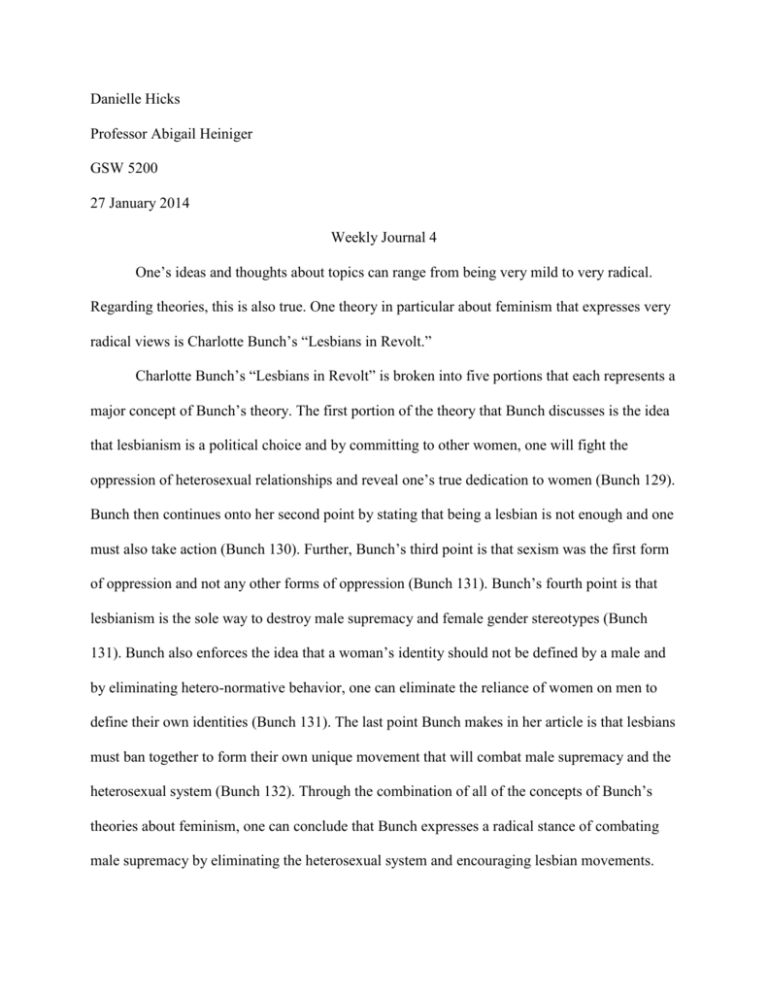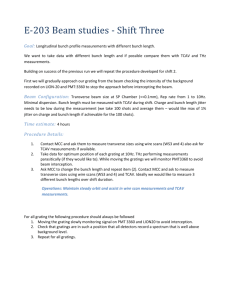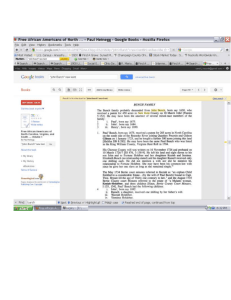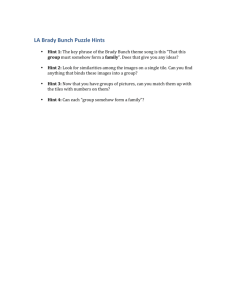Danielle Hicks Professor Abigail Heiniger GSW 5200 27 January
advertisement

Danielle Hicks Professor Abigail Heiniger GSW 5200 27 January 2014 Weekly Journal 4 One’s ideas and thoughts about topics can range from being very mild to very radical. Regarding theories, this is also true. One theory in particular about feminism that expresses very radical views is Charlotte Bunch’s “Lesbians in Revolt.” Charlotte Bunch’s “Lesbians in Revolt” is broken into five portions that each represents a major concept of Bunch’s theory. The first portion of the theory that Bunch discusses is the idea that lesbianism is a political choice and by committing to other women, one will fight the oppression of heterosexual relationships and reveal one’s true dedication to women (Bunch 129). Bunch then continues onto her second point by stating that being a lesbian is not enough and one must also take action (Bunch 130). Further, Bunch’s third point is that sexism was the first form of oppression and not any other forms of oppression (Bunch 131). Bunch’s fourth point is that lesbianism is the sole way to destroy male supremacy and female gender stereotypes (Bunch 131). Bunch also enforces the idea that a woman’s identity should not be defined by a male and by eliminating hetero-normative behavior, one can eliminate the reliance of women on men to define their own identities (Bunch 131). The last point Bunch makes in her article is that lesbians must ban together to form their own unique movement that will combat male supremacy and the heterosexual system (Bunch 132). Through the combination of all of the concepts of Bunch’s theories about feminism, one can conclude that Bunch expresses a radical stance of combating male supremacy by eliminating the heterosexual system and encouraging lesbian movements. Bunch expresses a particularly radical theory that shows a strong dislike for heterosexuality and the male sex. However, I find that through Bunch’s dislike of these groups, Bunch makes suggestions for combat that would only encourage the female sex to become the oppressors instead of the oppressed. I also find that Bunch’s concepts express a narrow view of the male sex that is solely composed of stereotypes and ignores the unique differences amongst the sex. Bunch states, “The only way oppressed people end their oppression is by seizing power…” (Bunch 130). It is through this radical idea that one does not create equality but encourages a sexist system that places one sex above another just like the current patriarchal system. The only difference is that instead of male supremacy it would be female supremacy and that is no better. Another theorist that expresses a similar distaste towards heterosexuality and the male sex is Shulamith Firestone in “The Culture of Romance.” Firestone’s “The Culture of Romance” expresses a similar stance against male supremacy in that she suggests a very negative view on heterosexual relationships as well as a strong dislike and generalization of the male sex. Firestone discusses the concept of individuals being hidden from one another by trying to meet societies ideal images. Firestone continues by stating that within a heterosexual relationship, if the woman were to discover the true identity of the male partner, he would be repulsed by her because “What he wants instead is the Pepsi-Cola Girl, to smile pleasantly to his Johnny Walker Red in front of a ski-lodge fire” (Firestone 127). Similar to Bunch’s generalized conclusions about the male sex, Firestone makes the generalization that men only want women for their face value and not their unique personalities. I find that radical theories such as these form from the concept of “an eye for an eye.” They oppressed us so we should oppress them. However, theories of this type offer no benefit and the oppressed only become the oppressors. An example of oppression that at points was fought with similar radical ideas is racism, specifically the class oppression of African Americans. The Black Panther group was an African American activist group that often used violent and radical methods to achieve their goals. As a result of such radical actions, the negative stereotypes of African Americans as violent and being less than whites was only perpetuated. Similar to the radical concepts of the Black Panther group to combat racism are the radical concepts of Bunch and Firestone to combat the heterosexuality and male sex that they believe enforces male supremacy. By engaging in these radical concepts, one becomes just as exclusionary as the current social system of males dominating females. Female domination or female supremacy in no better and perpetuates the stereotypes of feminists being strictly against the male sex and heterosexuality. By addressing equality issues in ways that suggest the domination of another group does not achieve equality but establishes war with the formerly oppressed group ruling over the former oppressors. While I encourage a radical movement to address equality issues, sexism in particular, fighting “an eye for an eye” is not the way to go about such change. Works Cited Bunch, Charlotte. "Lesbians in Revolt." Feminist Theory Reader: Local and Global Perspectives. Ed. Carole McCann and Seung-kyung Kim. 3rd ed. New York: Routledge, 2013. 129-33. Print. Firestone, Shulamith. "The Culture of Romance." Feminist Theory Reader: Local and Global Perspectives. Ed. Carole R. McCann and Seung-kyung Kim. 3rd ed. New York: Routledge, 2013. 123-28. Print.






